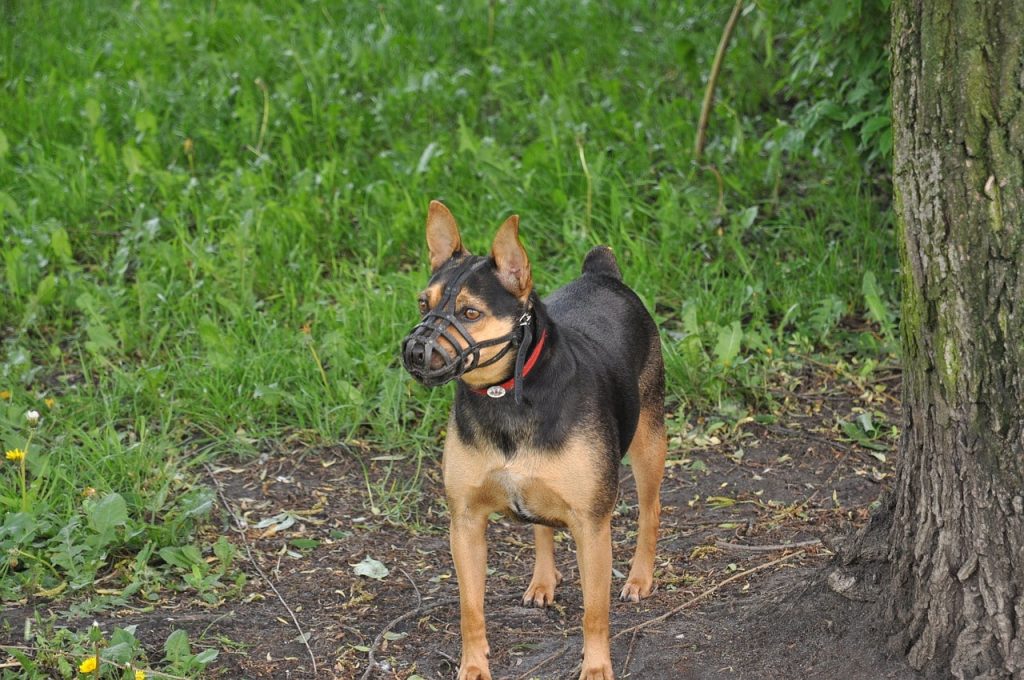A muzzle is necessary for any dog, regardless of its upbringing and temperament. To train a dog to wear a muzzle, it takes just a little effort.
A muzzle is necessary for any dog, regardless of its upbringing and temperament. Whether to put it on during a walk or not is a decision the owner makes. However, in public places such as public transport or veterinary clinics, any dog will require a muzzle, from a German Shepherd to a Bichon Frise. To train a dog to wear a muzzle, it is important to know the types of muzzles available, their differences, and how to introduce the equipment to the pet without making any mistakes.
When choosing a muzzle, it is important to consider first and foremost the purposes for which it is being acquired:
- for the safety of those around, including visits to the veterinarian;
- for transporting a dog on public transportation;
- for discouraging the pet from picking up unwanted objects from the ground;
- for aggressive dogs.
The shape of a muzzle, that is, the degree of openness, depends on its purpose.
The main types of muzzles are:
- Wire Mesh Muzzle. A versatile model that has stood the test of time. It consists of a wire basket. Provides reliable protection against bites, does not obstruct the pet’s breathing, allows for watering the dog, and has a long service life. Among the disadvantages of this model are its bulkiness and weight, as well as its unsuitability for winter weather.
- Leather muzzles come in two types – mesh and solid. The mesh models are made of leather strips fastened with metal rivets. They are comfortable, lightweight, provide excellent airflow, but have a shorter lifespan and are unable to retain their shape. Solid options are very reliable in terms of fulfilling their functions but do not allow the dog to breathe properly and are unsuitable for hot weather.
- Plastic muzzles are also designed in the form of a basket, similar to metal ones. They are lightweight, comfortable, and do not hinder breathing. However, the drawbacks of this model include fragility and the risk of rubbing the dog’s snout.
- Fabric models are made of nylon. They are lightweight, durable, and easy to use, but they are not suitable for large breeds and do not prevent the dog from picking up objects from the ground. Additionally, they may restrict the dog’s breathing.
- When choosing a suitable muzzle model, it is important to consider not only its reliability in performing its functions but also the comfort for the pet. The muzzle should not be tight, restrict airflow, or cause chafing.
Introduction to the muzzle.
It is important for the dog not to perceive any danger in the new accessory, so don’t rush to put it on immediately. Start by allowing the pet to sniff and examine it. Do not let the dog scratch or bite the item and calmly talk to the pet while it familiarizes itself with the new gear. After the dog has explored the item and understood that it poses no threat, you can fasten it around the dog’s neck without fully putting it on and leave it like that for about fifteen minutes, no longer. Then, take a treat and place it inside the muzzle for the dog to eat from the equipment. This will create a positive association with the item. By repeating this procedure several times, you can reinforce the positive reaction. When the dog sees the muzzle, it will start showing joyful emotions and wagging its tail. During the initial walks with the muzzle, simply hold it in your hand without allowing the dog to play with it.
At the next stage, offer the dog a treat by inserting it into the muzzle in such a way that the dog has to fully place its snout inside. Do not rush to fasten the gear if the dog wants to remove the muzzle; at this stage of training, the dog should have that option. It is important not to instill fear in the pet towards the equipment. Reinforce the result by repeating the exercise several times until your pet becomes fully accustomed to it. Don’t forget to praise the dog and reward it with treats. It is crucial to immediately establish a positive reaction from the pet towards the equipment. Make the dog understand that the muzzle is a temporary measure that is followed by a reward. If the training doesn’t yield quick results, do not scold the pet, simply continue the training patiently and cautiously. It is unacceptable to use the muzzle during activities that elicit negative emotions in the pet, such as visiting the veterinarian, undergoing unpleasant procedures, etc.
Training an adult dog.
Training a puppy to wear a muzzle should start from an early age, while for large breed dogs, it is recommended to start around six months of age. Puppies tend to adapt to the equipment much faster, often within a week. However, with adult dogs, the process may take three times longer. Here is a general algorithm for training an adult dog:
- First, it is necessary to familiarize the dog with the object and give them the opportunity to see that the new accessory poses no threat. Use treats to create a positive reaction to the equipment.
- Next, you should feed the dog something delicious from the muzzle, so that they put their snout into it. At this stage, there is no need to fasten the equipment.
- If the dog calmly tolerates a couple of seconds with the muzzle on but not fastened, praise and reward them with treats. Gradually, the duration of the dog’s presence in the equipment should be extended, approximately up to 8-10 seconds. Only then can you try to fasten the buckle. However, do not leave it fastened at this stage – immediately unfasten it. After several such fastenings, the dog will stop reacting to them and will not be concerned. Skillfully applying treat motivation, you will gradually achieve that the dog will calmly accept wearing the muzzle, just like wearing a collar.
- Once your pet is accustomed to the muzzle in a home environment, you can venture out for a walk while wearing it. It is important to choose the right muzzle that is comfortable, doesn’t cause discomfort, rubbing, or hinder breathing. If the dog tries to get rid of the muzzle while outside, try to distract them and redirect their attention to something interesting. And never forget to praise and reward your pet for calm behavior. Do not make the mistake of removing the muzzle if the dog is actively trying to do it themselves. The equipment should be removed when the dog pays no attention to it, not at the demand of the pet.
If the muzzle is to be used for an unpleasant procedure such as vaccinations, it is advisable not to put it on immediately before the manipulation in order to avoid creating a negative association with the object. It is better in such cases to put on the muzzle in advance so that the dog does not associate the act of putting on the muzzle, for example, with getting an injection. When it’s all over, be sure to praise your pet for their well-behaved behavior.
Common mistakes.
Inexperienced dog owners often make mistakes when introducing their dog to equipment. The most common ones include the following:
- Inconsistency in training actions. The process of muzzle training should progress gradually, and each subsequent stage should be approached only when the dog has fully mastered the previous stage.
- Removing the muzzle upon the pet’s request.
- Incorrect choice of model or size of the accessory, resulting in discomfort for the dog or the ability to remove the muzzle on its own.
- Putting on the equipment immediately before unpleasant procedures.
Training an adult dog to a muzzle is much more challenging, so this important skill should be developed starting from the puppy age. By performing all the training stages correctly and consistently, you will be able to quickly teach your pet to accept the equipment.
Поради щодо здоров’я та харчування тварин у 2025.
⚠️ We suggest that you read all the opinions on our portal and take note of them at your own discretion. Do not self-medicate! In our articles we collect the latest scientific data and opinions of authoritative experts in the field of health care. But remember: only a doctor can diagnose and treat.
The portal is intended for users over 13 years old. Some materials may not be suitable for children under the age of 16. We do not collect personal data from children under 13 without parental consent.We have a small request. We strive to create quality content about pet care, and we make it available for free to everyone because we believe everyone deserves accurate and useful information.
Advertising revenue only covers a small portion of our costs, and we want to continue to provide content without having to increase advertising. If you have found our content useful, please support us. It only takes a minute, but your support will help us reduce our reliance on advertising and create even more useful articles. Thank you!


